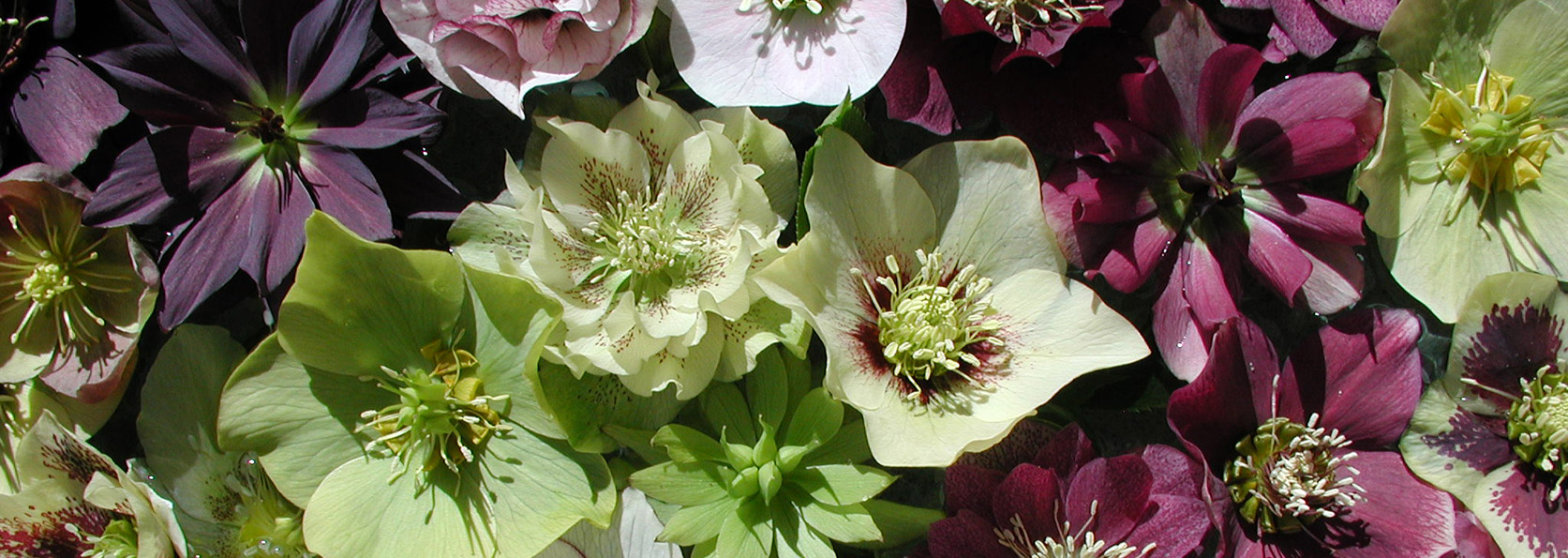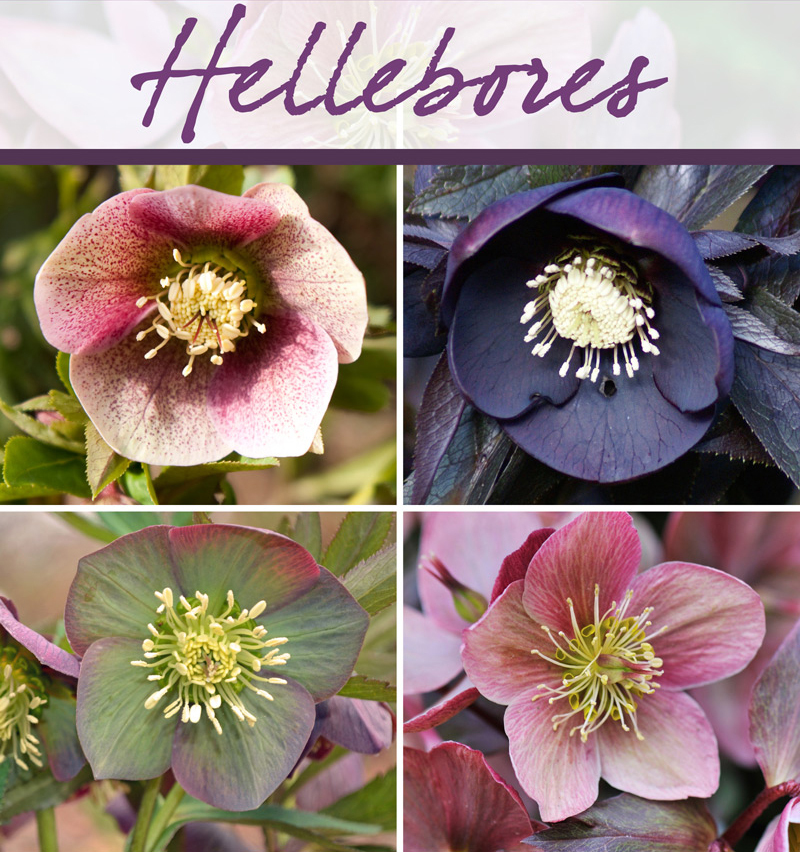Give The Original Christmas Gift
 Holiday Plant of the Week: Hellebores
Holiday Plant of the Week: Hellebores
Hellebores make wonderful holiday gifts. These no-fuss evergreen plants are drought tolerant and animal resistant. They enjoy the cool weather, and put on significant growth during the fall.
Some say the Hellebore was the original Christmas gift. A legend associated with the Christmas Rose concerns Madelon, a girl who visits the Christ child in Bethlehem, but has no gift for him. An angel intervenes by touching the ground, and the Christmas Rose immediately springs up from the spot.
The varieties gardeners know as the Christmas Rose brighten the holiday season, blooming from winter into early spring, even while blanketed in snow. The Hellebores we are offering have been grown under natural cold conditions. We recommend either planting our Hellebores directly into the garden or placing them in a very cool room with a well lit window. A sunroom without any heat would actually be preferable. Hellebores will not fare well in a warm environment.
Choose a shady spot in the garden with good drainage when deciding where to plant Hellebores. Hellebores will benefit from a bit of winter protection when being planted this time of the year. Evergreen boughs loosely arranged over the top of the Hellebore can serve as an excellent insulator for the winter. This is a great way to “recycle” the lower branches from your live Christmas tree and protect the Hellebore while it is getting established in the garden bed. Just remember to keep the arrangement of tree branches open enough to allow sunlight to reach the Hellebore.
Use Hellebores in shady borders, pollinator gardens, naturalistic gardens, woodland gardens, and spaces between shrubs or under trees. They tolerate a variety of growing conditions, but love rich, well-drained soil that is neutral to alkaline. The most important thing to remember is not to overwater a Hellebore.
Bonus: Hellebores are naturally deer and rabbit resistant. These plants secrete a substance that makes them unpalatable to animals.
The Hybridus forms of Hellebores (formerly orientalis) are known as Lenten Roses, and tend to bloom later in the spring (around Lent). The Niger forms bloom during the winter and are called Christmas Roses.
Despite these common names, Hellebores are not close relatives of the classic garden Rose at all. The five colorful parts of the Hellebore flower are actually its sepals. The sepals can be solid green, white, pink, black, or peach, and may be solid or strikingly marked with other shades.
Hellebore petals appear like frilly cups around the center of the flower. These modified petals are known as nectaries, since they hold on to nectar.
Gardeners love Hellebores because these perennials:
- Retain their colorful sepals for many months, sometimes blooming into early June
- Provide a steady nectar source for pollinators
- Make year-round garden color possible
- Are drought tolerant
- Are deer, rabbit, groundhog and critter resistant
Even a gardener who “has everything” will appreciate the gift of a Hellebore this holiday season. Visit us today for the best selection.

